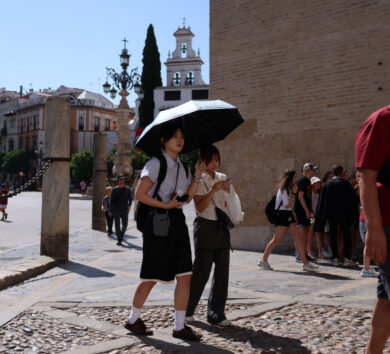
New study shows native trees in Jamaica being driven towards extinction by species migration

Durrant Pate/Contributor
Native trees in Jamaica, particularly those in the world famous Blue Mountains, are being driven further up mountains towards extinction, due to species migration.
This is among the main findings in a new study carried out by an international team of scientists who have just published their research showing that, in the Blue Mountains, species migration was accelerated by Hurricane Gilbert in 1988.
Gilbert caused serious damage to the Blue Mountain forest, snapping the branches and trunks of many of the biggest trees.
Most resprouted and survived but the research is indicating that the rate of mortality is particularly high for the species that are restricted to the highest altitude forests. The gaps in the canopy opened up by the death of these trees provided the opportunity for new trees to regenerate.
Blue Mountains dominated by lower altitude species
However, these tended to be species from lower down the mountain slopes with the net result being that the Blue Mountains forest is becoming more dominated by lower altitude species, thus accelerating a process that was already slowly under way due to global warming.

Lots of the species native to the upper slopes of the Blue Mountains exist nowhere else in the world. Some exist on a few other Caribbean mountains, but there they will be equally threatened by severe storms.
The Blue Mountains rise to an altitude of 2,256 metres and there is still forested land further up the slopes for the rare mountain species to migrate. However, the research unearthed that once they become confined to the highest mountain ridges, there will be nowhere else to go.
The researchers, who were not individually identified, pointed to the danger that an increase in severe hurricanes like Gilbert will bring that threat of extinction ever closer.
Alien invasion in the Blue Mountains
The invasion of the Blue Mountains forest by plant species alien to made even more serious given the threat of an increase in intense. One such alien invader is the Australian tree, Pittosporum undulatum (known locally as ‘mock orange’ because of its brightly coloured fruit), which was introduced to a botanic garden in the Blue Mountains more than 130 years ago.
Years later, this species has become one of the world’s most invasive tree species. In Jamaica, its seeds are dispersed far and wide by native birds and the gaps in the canopy of the natural forests across the Blue Mountains caused by Hurricane Gilbert allowed a huge expansion of its invasion.
Pittosporum casts a dense shade and the Blue Mountain forest research has shown that it out-competes many native trees, particularly threatening the high-altitude species that exist nowhere else and are the most vulnerable to global warming.
Call to reduce the risk of extinction in Caribbean forests
Taken together, the researchers concluded that immediate steps need to be taken to reduce the risk of extinction in Caribbean forests noting that better regulation of the movement between countries of species with any potential to become invasive is essential. This is in addition to controlling invasive populations, where they have already started to threaten biodiverse natural habitats.

The research team commented that unless states can effectively solve this climate-hurricane-invasive species combination of threats, then conservation in these mountains will fail and countries will be reduced to trying to preserve species outside their native habitats in botanic gardens or seed banks.
The Blue Mountains of Jamaica are frequently covered in a dense blanket of cloud, but when it lifts the first thing one will notice is the cloak of forest extending up their steep slopes to the top of the highest peaks. As one walk up through these trees, the individual will encounter an incredible diversity of habitats from the high canopies of the lower slopes to the elfin forests of the ridge tops (barely taller than head height).







Comments